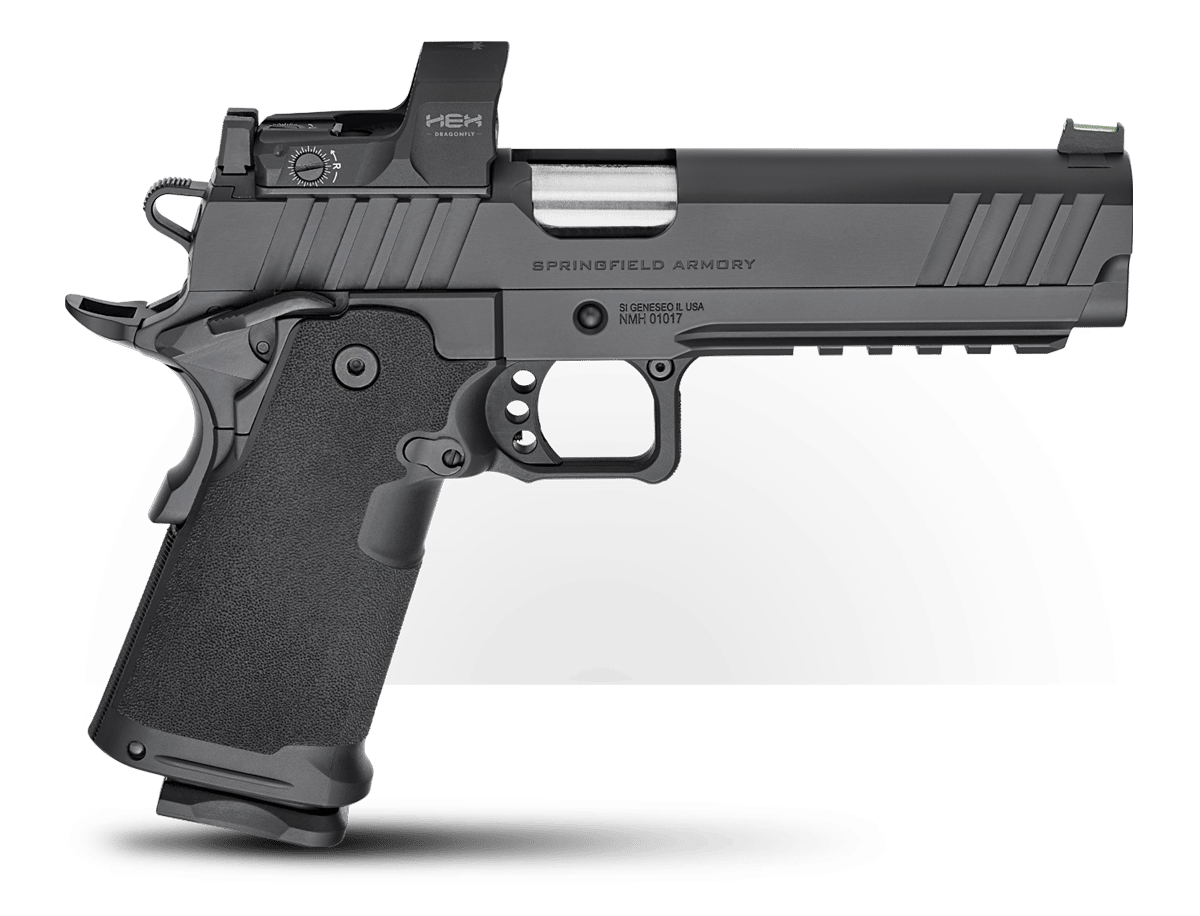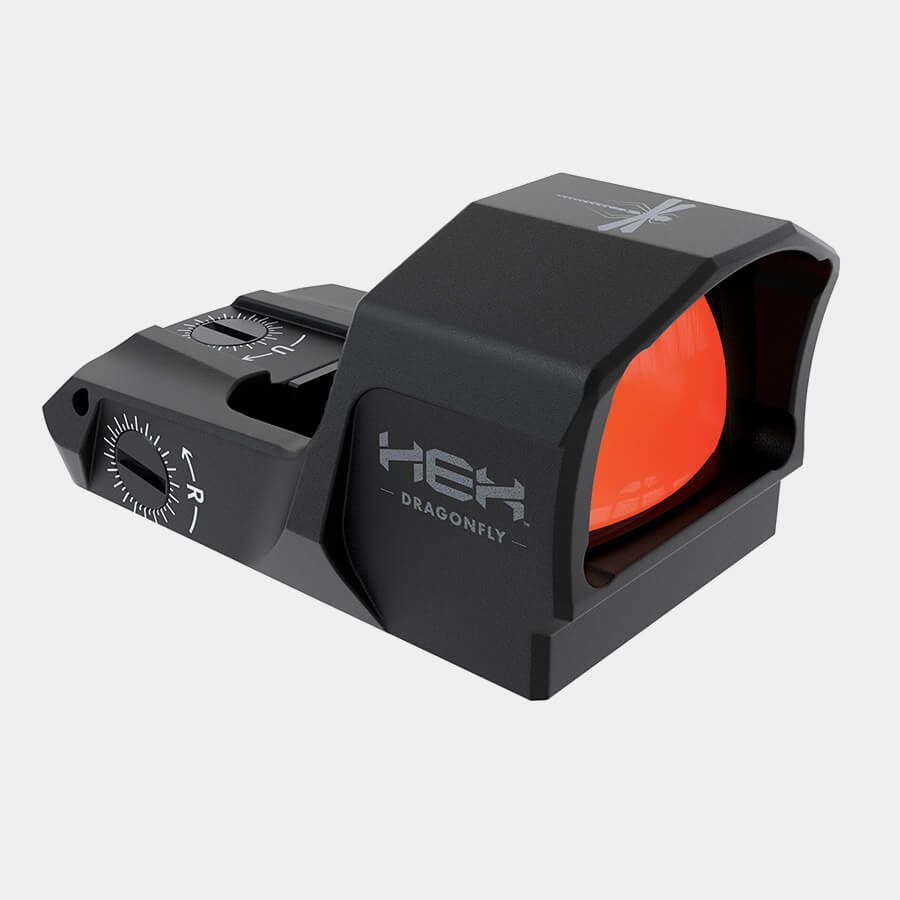What is a “Prodigy?” According to the Merriam-Webster dictionary, it is “something extraordinary or inexplicable, marvelous, or unusual.” I must admit, from a marketing standpoint I think it was genius on Springfield’s part to name their new 1911 9mm the 1911 DS Prodigy.
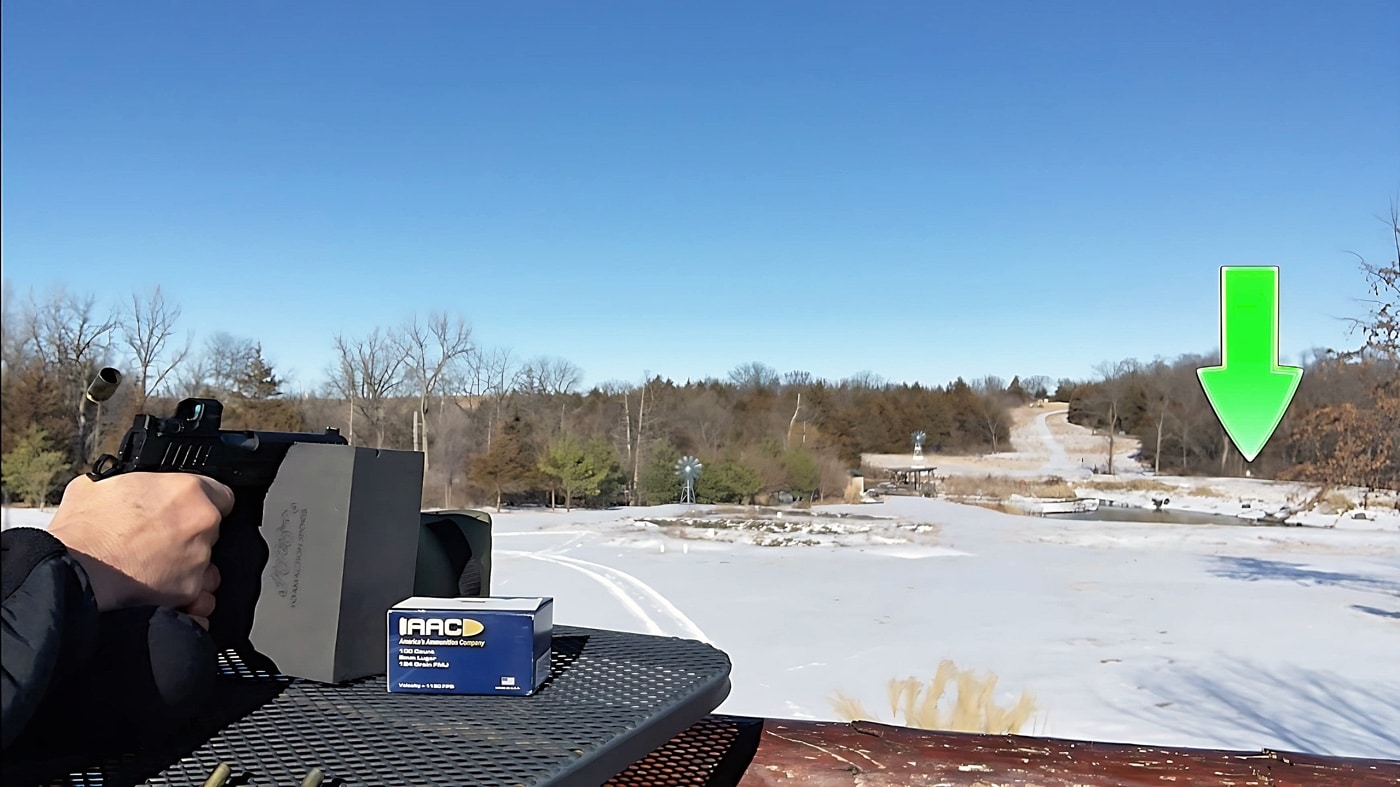
However, the name sets the bar really high right out of the gate. Will the Prodigy live up to its name? There’s only one way to find out, and I think the best way to test a pistol’s capabilities is to shoot it at distance. That’s the question: How far can a Prodigy shoot?
[Be sure to see our Springfield Prodigy Torture Test to see how reliable the pistol is also!]
About the Long-Range Capabilities of the Springfield Prodigy
Before I get ahead of myself here, I always like to cover the basics first — what I call specs and tech. Just in case you are not familiar with the Prodigy, I think it’s important to know what it is and its technical data before we go putting it to the test beyond 100 yards, don’t you think?
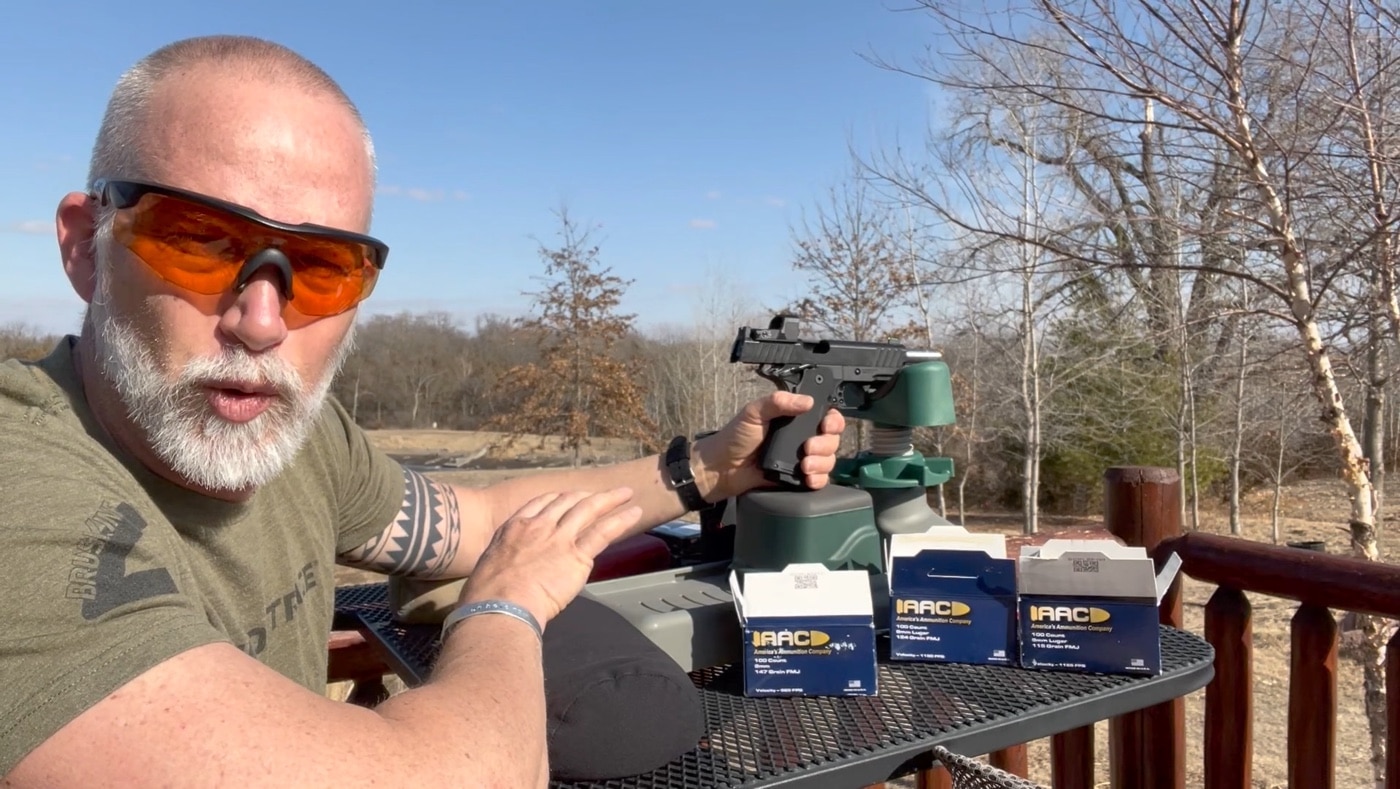
The Prodigy is one of the newest double-stack 1911-style pistols available in 9mm. When you look up the Prodigy, it is listed as a 1911. In its purest form, the 1911 is the classic, iconic .45 ACP handgun adopted by the U.S. military more than 100 years ago. It is time-tested, battle-proven and just simply a legend that remains the top pistol choice for many people.
The most significant limitation of the 1911 pistol, in my opinion, is the single-stack magazines which limits the number of rounds you can carry. The creation of 1911 pistols with double-stack magazines attempts to overcome that limitation. This is where the Prodigy fits.
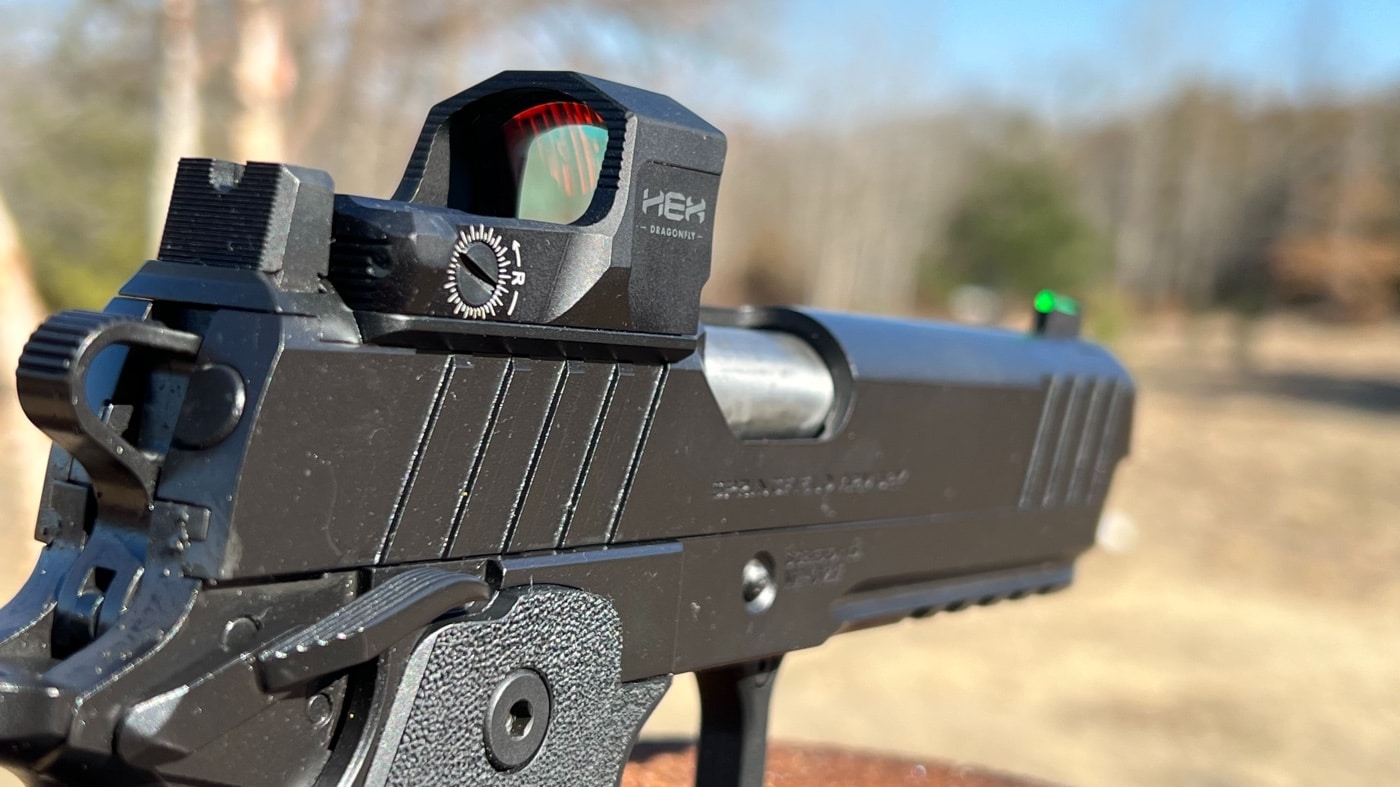
When you look at the Prodigy, it looks and feels like a 1911. When taking a closer look, however, there are substantial differences. The most notable feature of the Prodigy is its higher capacity over a traditional 1911. Double-stack magazines with capacities of 17- and 20-rounds are included with the gun. Additionally, 26-round magazines are also available from the company.
Springfield’s design team managed to keep the grip slim enough to still be comfortable in the hands with the substantially increased capacity. The work is impressive. The grip module itself is a very comfortable polymer that wraps around the forged steel frame.
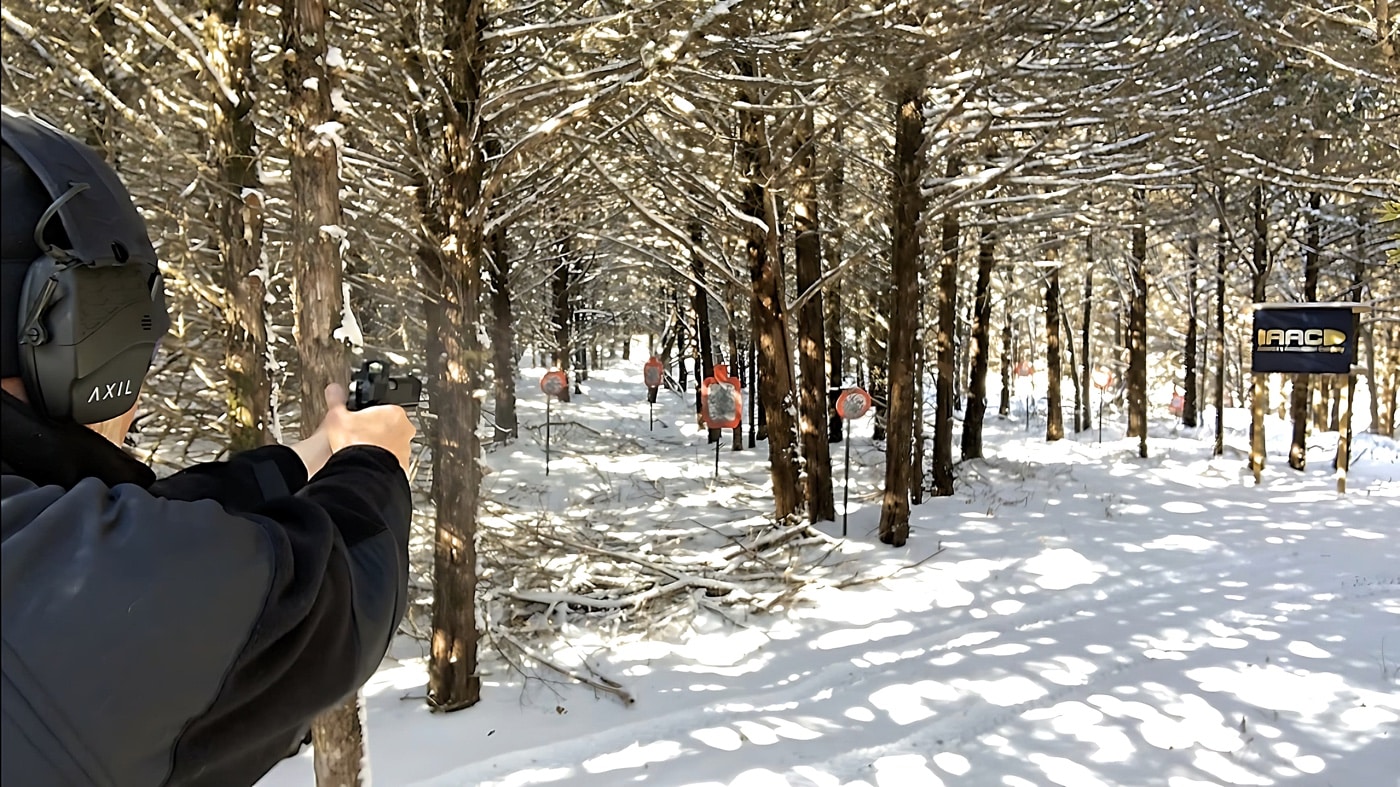
Another big difference from the classic 1911 is that the Prodigy is optics-ready right out of the box. Many folks these days prefer optics on their pistols, and I can tell you that to shoot out to 100 and 200 yards especially, I need an optic.
The next thing I noticed was the match-grade bull barrel. This is one solid barrel, and you will notice the thickness immediately. It comes in either 4.25” or 5” and is made of forged stainless steel with an 11-degree crown. With the combination of the steel frame and bull barrel, you have a much heavier gun than the typical polymer 9mm, which gives you a really solid base for accurate and fast follow-up shots.
Prodigy Hitting Targets at 50, 100 and 200 Yards
I think the best way to put a pistol to the test is to take it out some distance. I am not talking 20 yards, not even 50. I am talking 100 and 200 when possible.
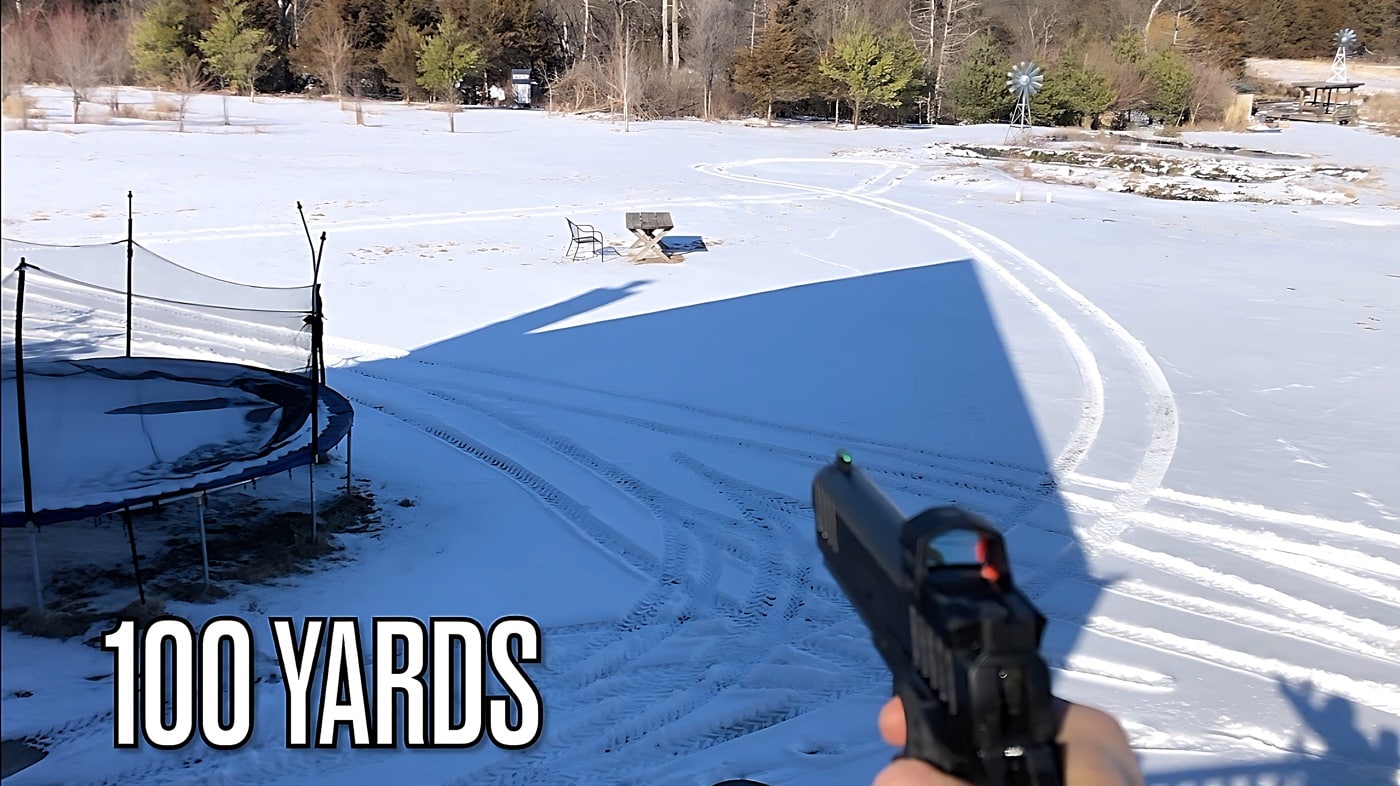
I always get comments like “why would you shoot a pistol at 100 yards?” Easy. Most folks with reasonable shooting skills can hit their target at 5’ or 10’ with decent groups. While that may be suitable for most situations, that does not really say anything about the gun’s full accuracy potential.
Now, when you move out to 25 and 50 yards, accuracy and precision become much more challenging. You need a good shooter, but you also need a good gun to do this — especially if shooting rapidly or without the benefit of a bag. The faster you can get off accurate shots at distance says volumes about the gun’s handling and recoil.
Move to 100 yards, and accurate pistol shooting starts getting difficult, even when benching it. In my opinion, the farther out you go speaks to not only the shooter but also the gun. This is why I like to review my pistols at long distances. Move to 200 yards, and it says even more about the gun. A consistent number of hits at 100 and 200 is what I look for to judge the quality of a pistol and its accuracy potential.
There are lots of videos and reviews of the Prodigy at typical shooting distances and even some at the longer distances of 25 and even 50 yards. Rarely do I see reviews or videos of pistols being shot out to 100 and 200 yards.
My Experience with How Far the Prodigy Can Shoot
I got the Springfield Prodigy out on the range with a plethora of 9mm loads. To start with, I sighted the gun in at 50 yards and seasoned the barrel. Even with windy conditions, I managed good groups with all bullet weights.
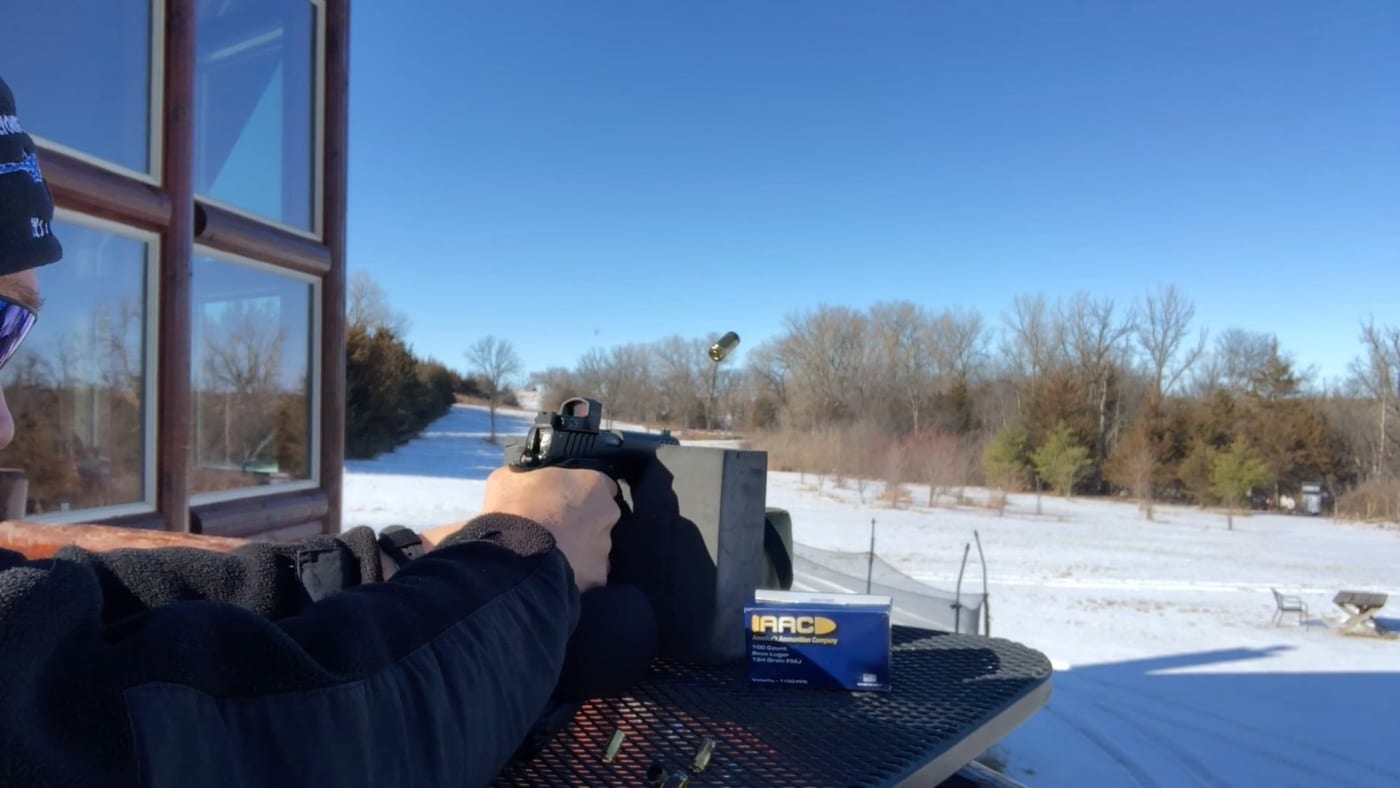
At the CQB range, I ran the gun hard and fast with all kinds of ammo, including some budget brands like Wolf and Tula. Reliability was excellent and I rang the steel targets at distances up to 25 yards. Recoil was easy to manage and target transitions seemed smooth and fast.
At 100 yards, I used a rest and shot from my bench. Ringing steel was relatively easy at this distance. If you watch the above video, you can hear the satisfying “ding” of rounds impacting the target. I even made several one-handed, non-benched shots at this distance.
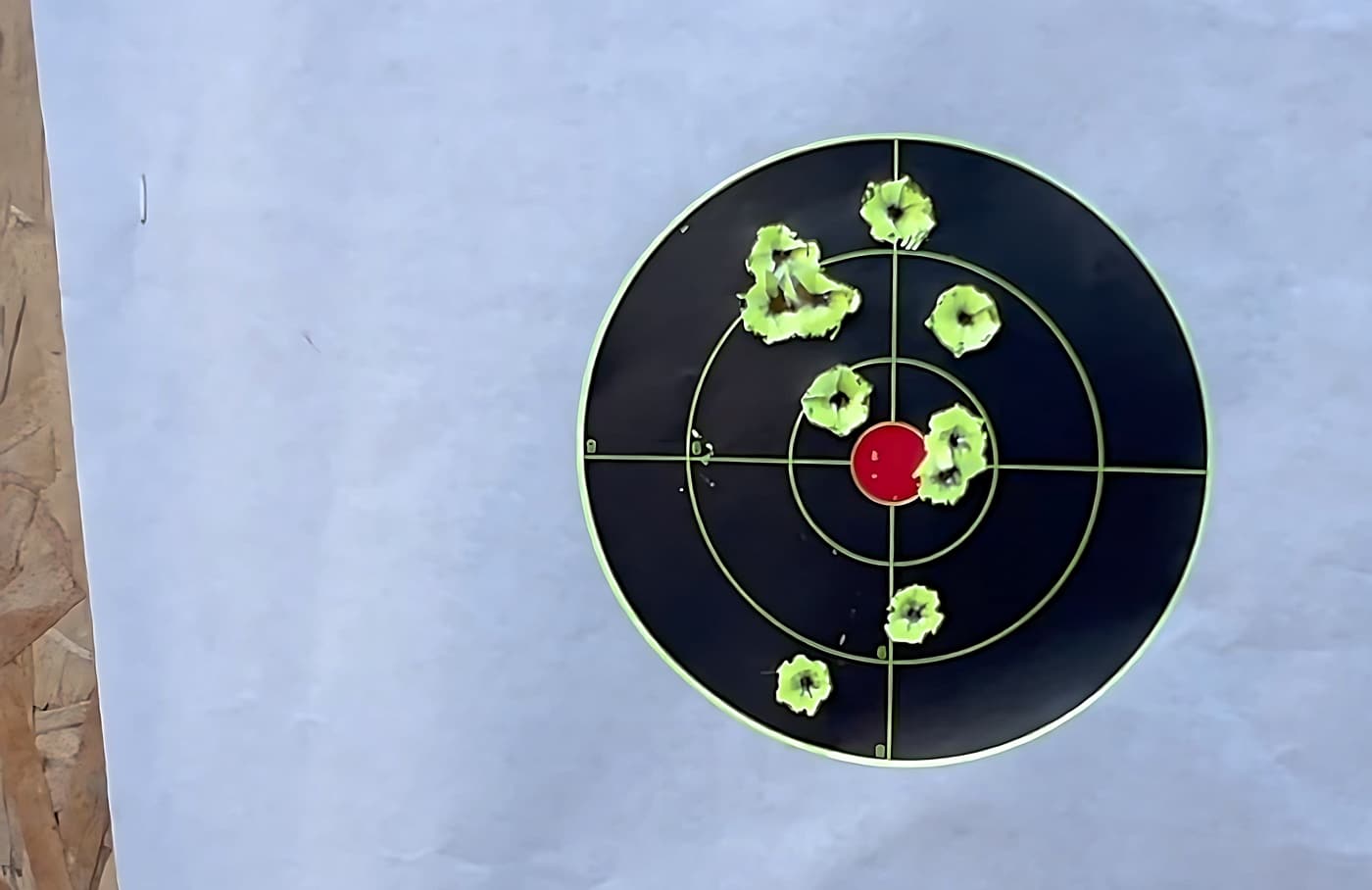
With the 200-yard target, I had a substantial drop due to the characteristics of the cartridge. Holding several feet above the target, I consistently rang steel shooting with a rest. While shooting a 9mm pistol at 200 yards is not a frequent occurrence in any context, it says a lot about a gun that allows you to do it repeatedly.
Conclusion
So, there you have it. Does the Springfield Armory Prodigy live up to its name? That’s for you to decide. I hope that by relating my experiences with the pistol, I’ve given you some data to help make that decision. I know what my opinion is!
Please be sure to check out The Armory Life Forum, where you can comment about our daily articles, as well as just talk guns and gear. Click the “Go To Forum Thread” link below to jump in and discuss this article and much more!
Join the Discussion
Featured in this video
Continue Reading
Did you enjoy this video?

 55
55




